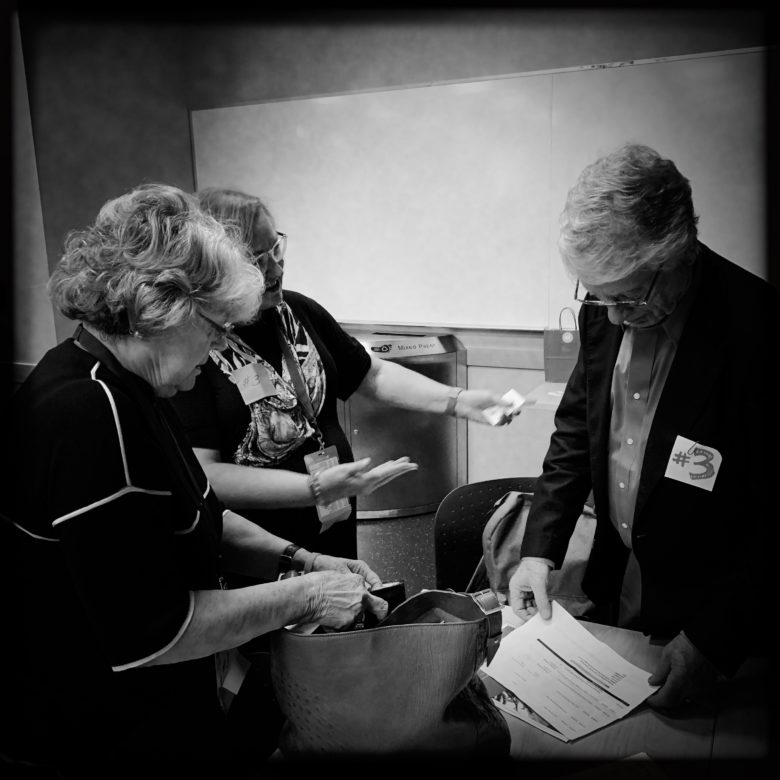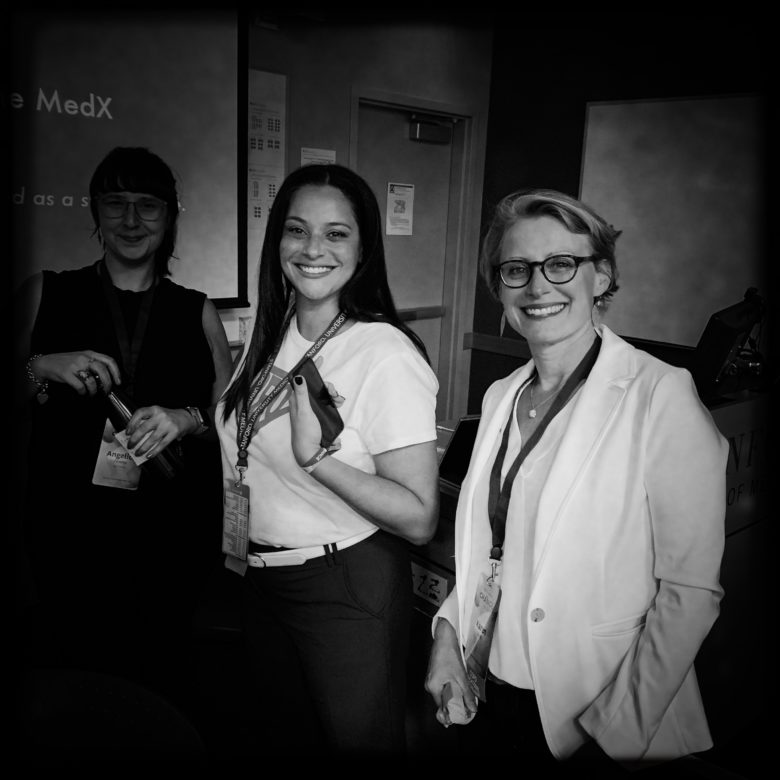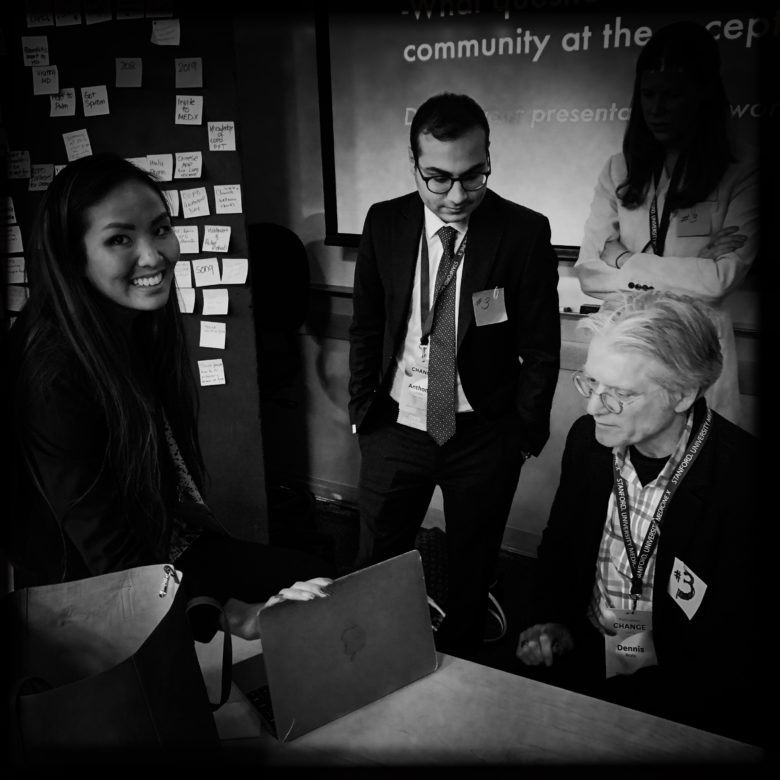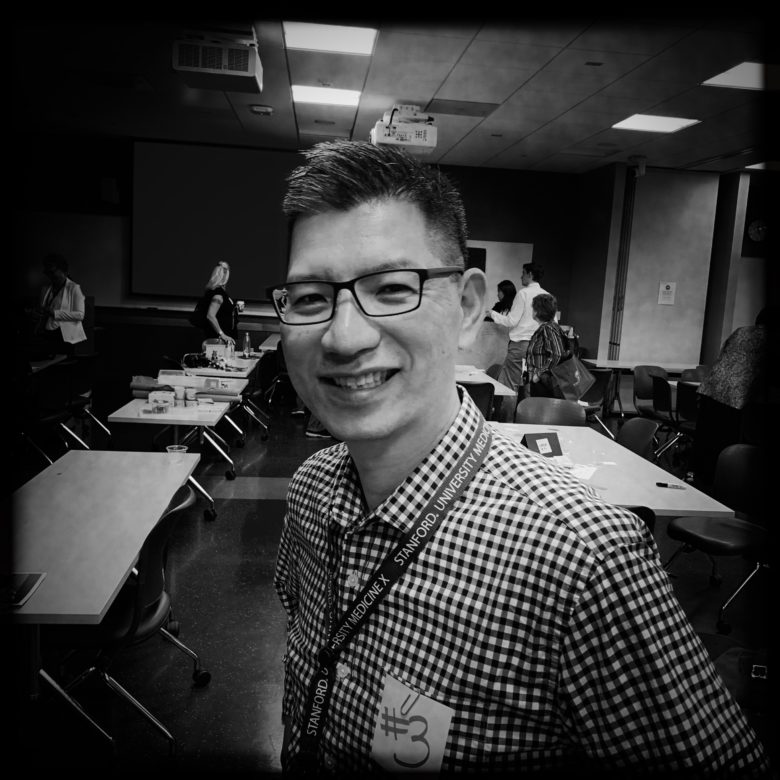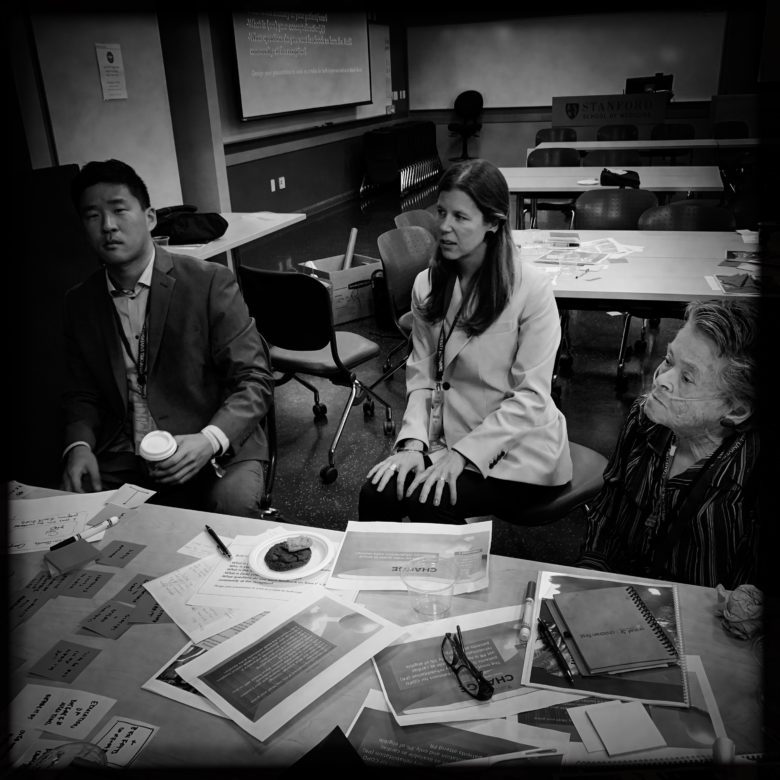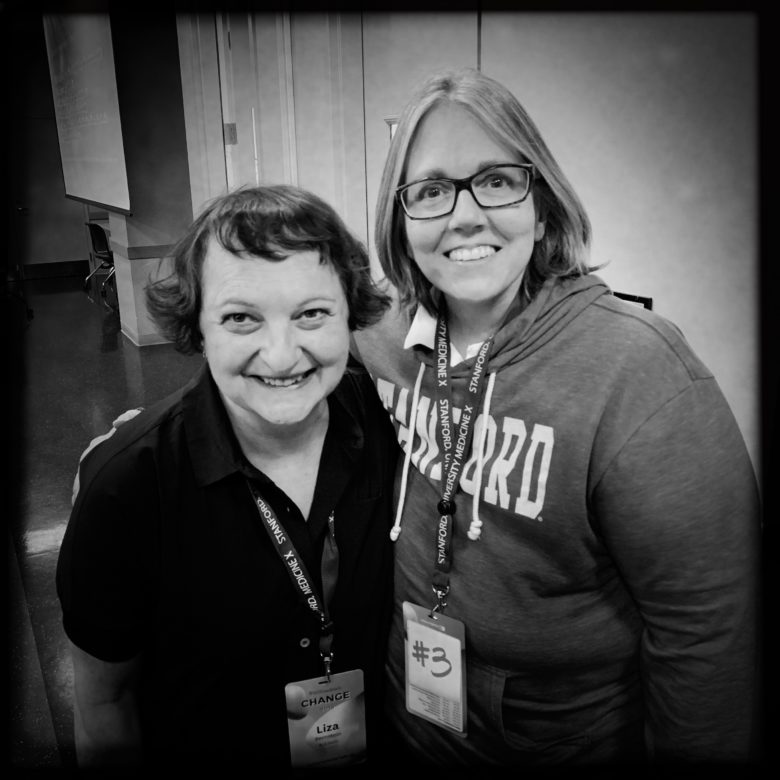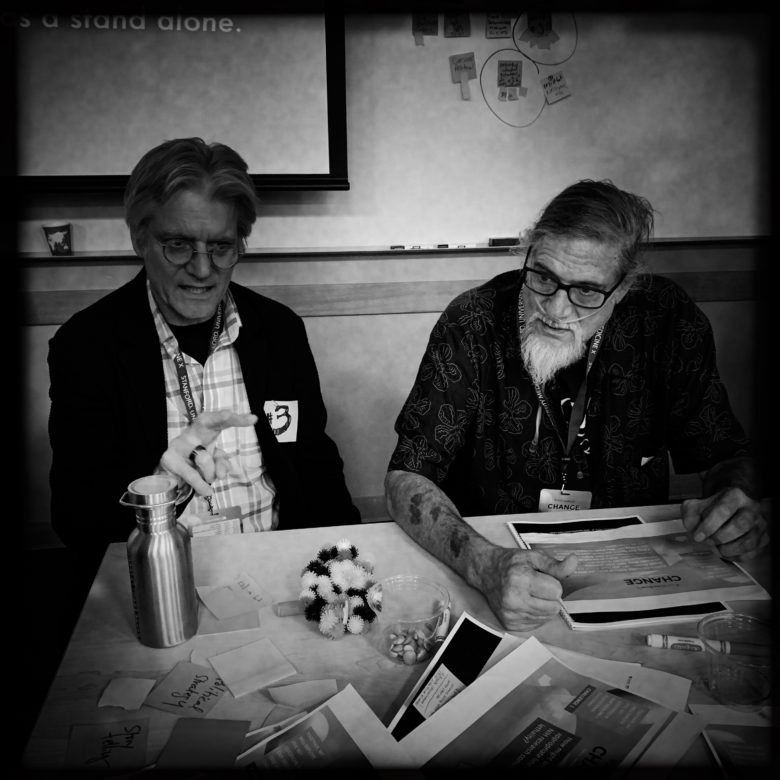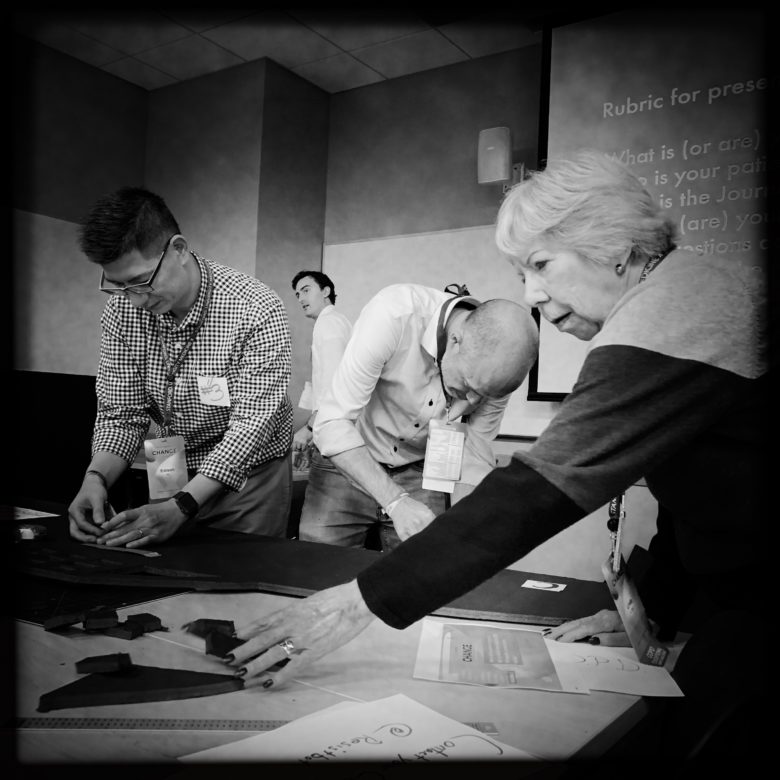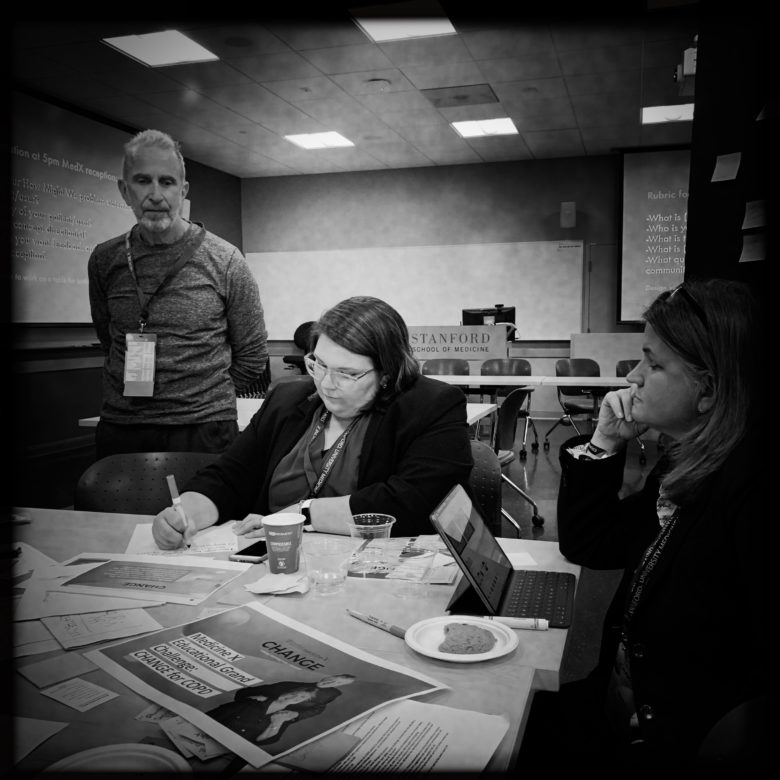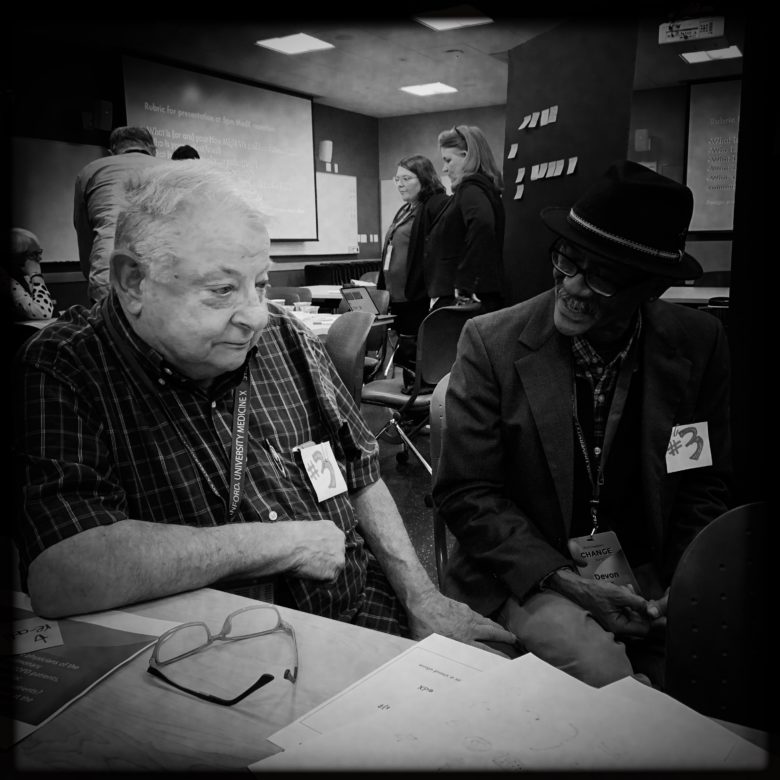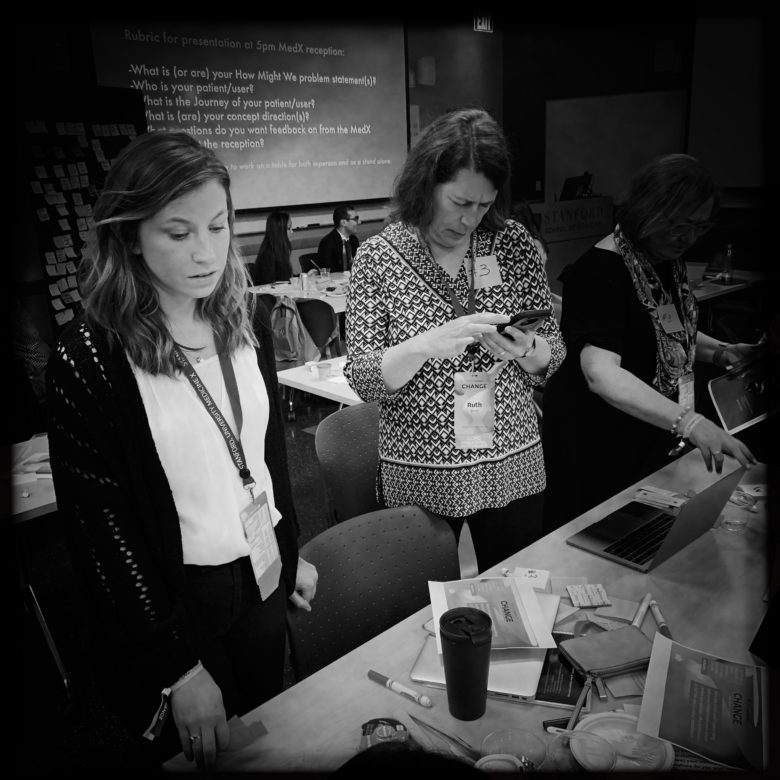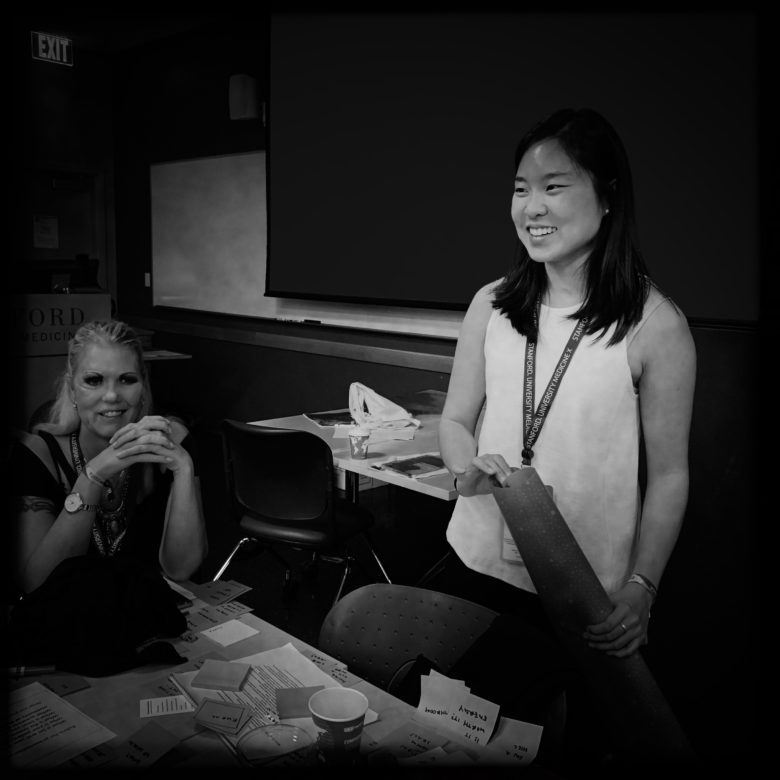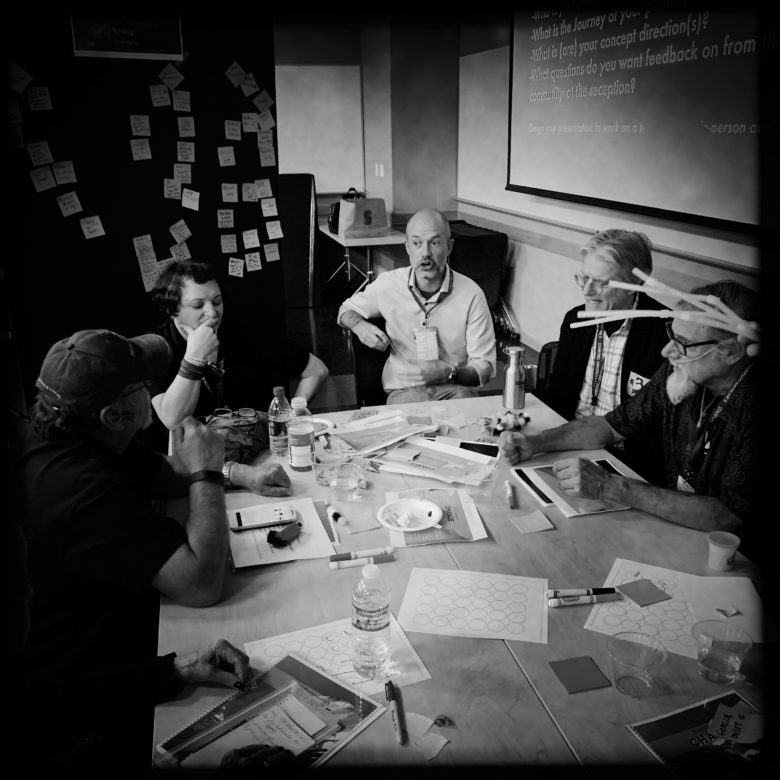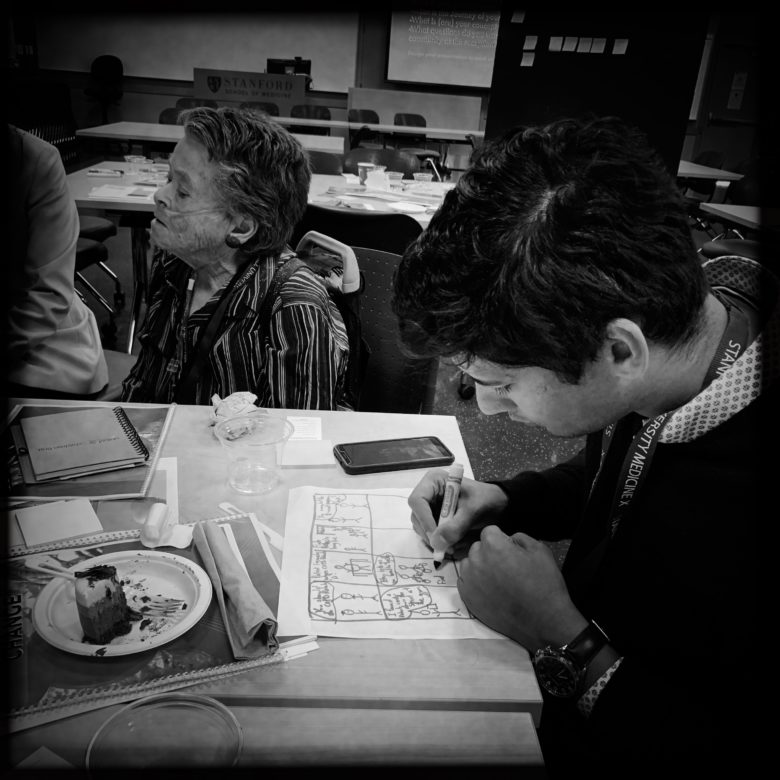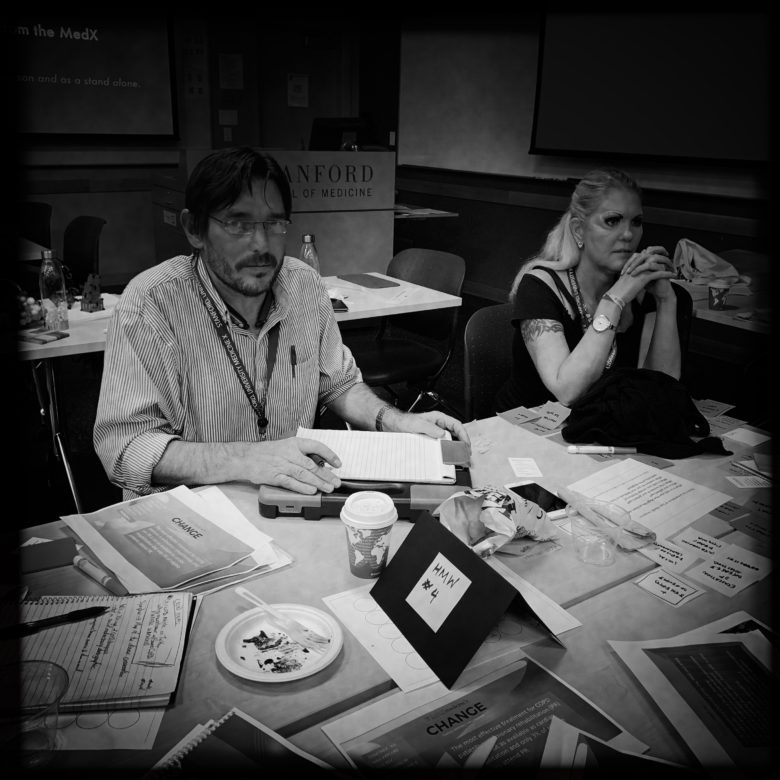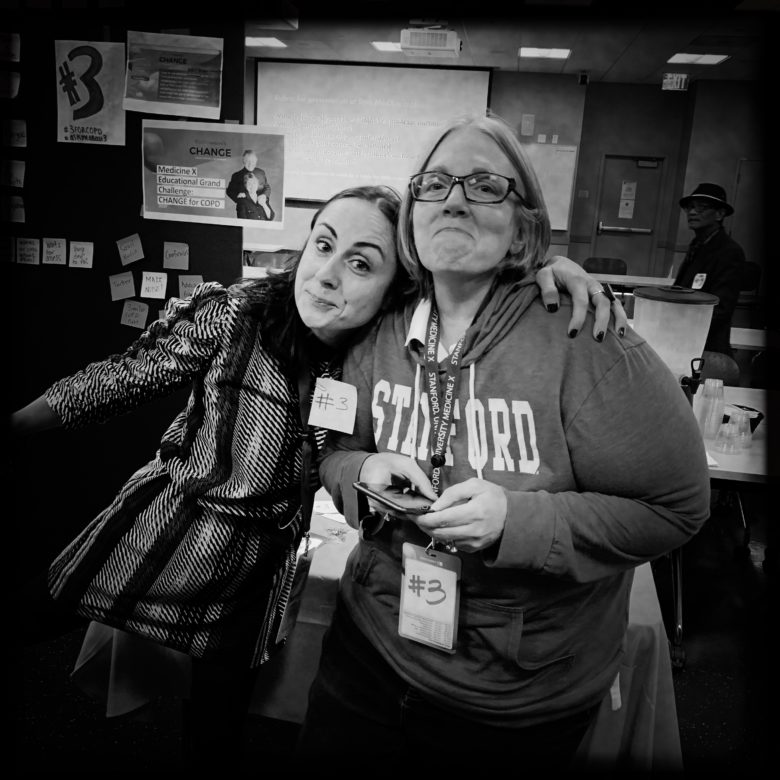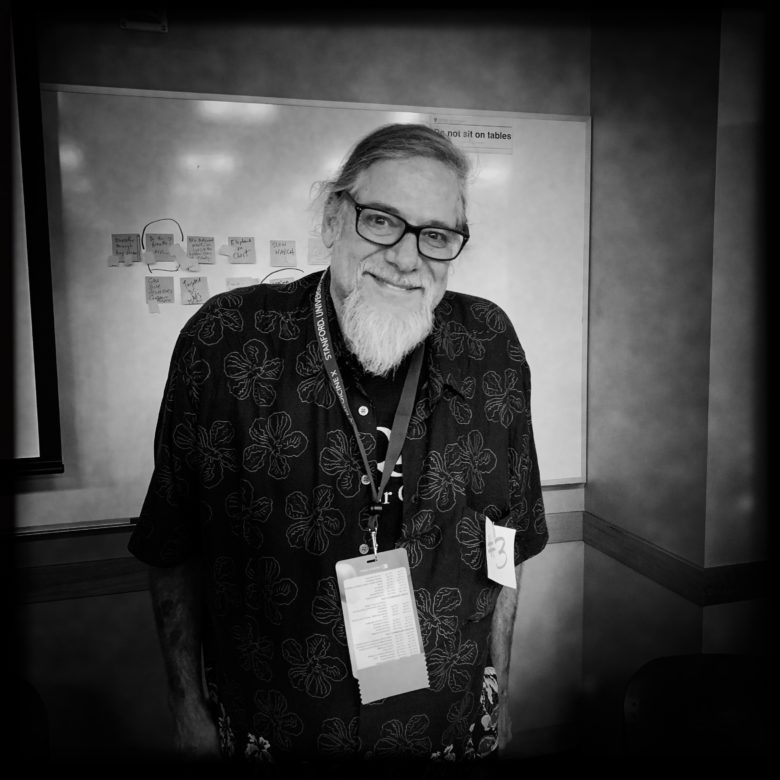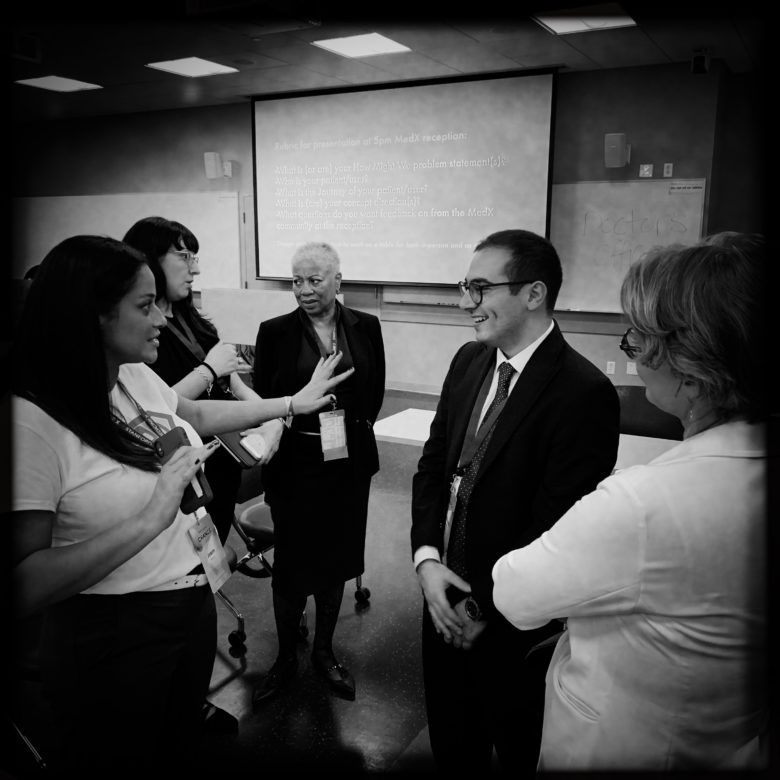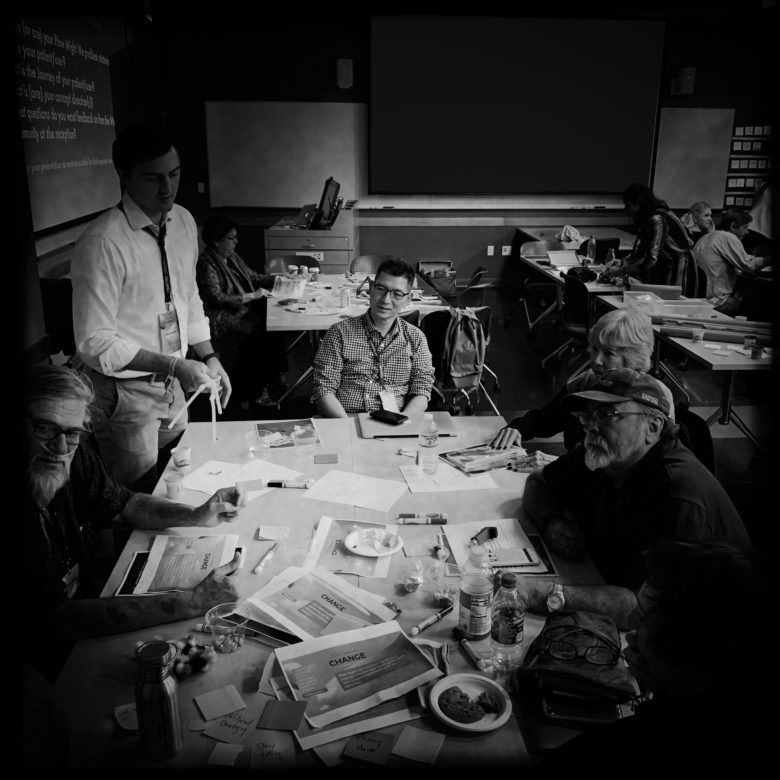Initial insights from the Stanford Medicine X COPD Challenge reiterate the power of social media to galvanize communities around healthcare predicaments.
Last month, Grace Anne Dorney Koppel and her husband—icon of American news—Ted Koppel, learned that there’s nothing quite like presenting a massive health predicament to the passionate Stanford Medicine X (MedX) community.
I’m referring, of course, to the 2019 Stanford Medicine X | CHANGE Educational Grand Challenge on COPD. As noted previously, Symplur joined the Challenge and is providing custom social media dashboards to uncover insights from public social media conversations on COPD through access to the Healthcare Social Graph®.
In this post, after a quick overview of the predicament, the characteristics of the MedX community, and the Challenge, I’ll share our initial insights. Spoiler alert, they reiterate the power of social media to galvanize communities around healthcare predicaments.
The Predicament: COPD, Third Leading Cause of Death
In 2001, Grace Anne was diagnosed with chronic obstructive pulmonary disease (COPD)—a term which includes conditions like emphysema and chronic bronchitis. As she told us in her moving and rousing opening presentation:
“I wasn’t ready—I guess none of us are—to meet the disease that’s going to be our biggest challenge.”
While COPD is the 3rd leading cause of death by disease in the US, it is only approximately 165th in research funding at the National Institutes of Health (NIH). The diagnosis is terminal, it is steeped in ignorance and stigma and, according to the American Lung Association:
“More than 11 million people have been diagnosed with COPD, but millions more may have the disease without even knowing it. COPD causes serious long-term disability and early death. At this time there is no cure, and the number of people dying from COPD is growing.”
The Community: “MedX Family,” Innovative, Connected, Inclusive
The community—we like to call it the MedX Family—is highly innovative given several factors, including the conference’s focus on:
- Incorporating human-centered design and design thinking into its fabric, and convening hands-on workshops that teach the methodology by doing. Many of these have been in collaboration with global design firm, IDEO, and its co-founder and Health and Wellness practice leader, Dennis Boyle.
- Both welcoming ePatients as equals, and grooming them through its signature ePatient Scholar Program. (Disclosure: I am a MedX founding ePatient scholar, advisor, and former board member.) Back in 2015, my fellow MedX ePatient Advisor alum Erin Moore said it best, speaking of MedX:
“By engaging patients as partners, we will make the network our superpower.”
- Using the power of the internet to reach and include a global audience of remote, active participants. All plenary presentations are live-streamed and videos are archived and made available for viewing. Plus, Twitter has, from the get-go, been the conference’s connection and communication tool of choice, via the #MedX hashtag.
The Challenge: Innovating COPD Advocacy
Grace Anne and Ted have long advocated for all things COPD, including the need for significant research funding, and the importance of pulmonary rehabilitation (an under-utilized and often inaccessible but highly effective treatment modality). While they have already helped to move the needle, their quest to take their advocacy to the next level led them to Medicine X, and resulted in the Challenge.
With the design team that included leaders Dennis Boyle, and Monika Wittig (Inworks Innovation Initiative, University of Colorado), they surfaced the following problem statements to be addressed at the conference’s Challenge Workshop: How Might We…
- Engage the medical community in the earlier diagnosis of COPD?
- Convince Congress to appropriate line item funding for COPD NIH research consistent with the number of people it affects in the U.S.?
- Reduce the societal stigma of COPD? How might we focus attention on the millions of people who have never smoked, those who got the disease through second hand smoke, environmental and work-related conditions?
- Make access to pulmonary rehabilitation more routine?
- Increase awareness of the evidence-based benefit for prescribing pulmonary rehabilitation for COPD patients? How might COPD rehabilitation treatment be implemented into clinical practice as effectively for people living with the condition as cardiac rehabilitation has been implemented for people living with heart conditions?
As a participant in the workshop, my background in human-centered design, cancer advocacy, and online community kicked in. As I connected the dots, the example of Stand Up to Cancer (SU2C) came to mind, including its partnership with the AACR, and I arrived via Twitter thread (how else?!) at the insight that a zoom-out was needed. I then created a proposal with a 6th How Might We…
How might Grace Anne and Ted leverage their powerhouse network to create the @SU2C for #COPD?
… along with a roadmap to a combined top-down and bottom-up approach, plus the slogan, “I breathe for.” This was accepted into the Challenge along with the five others.
The Insights: Seeking a Visible Patient Champion
While there were many takeaways from the Challenge, and it continues through December 2019, for the purposes of this post, we will limit our focus to the immediate Twitter component.
First, there was impact. People were talking #COPD at #MedX:

Audun Utengen‘s analysis of the conversation’s trending terms revealed a pattern that came as no surprise when we scanned the landscape of COPD patient advocates on Twitter. We only found a handful.

Alicia Staley, a visible patient champion in her own right, and the co-founder of the #BCSM (Breast Cancer Social Media) chat/community, spoke to the Challenge participants about the power of Twitter to energize and connect patients dealing with very similar disease profiles, regardless of geography. As she says,
“Twitter shrinks the world. It puts the power of patient communities in your hand, giving you immediate access to information, support, and connection. You can use social media to blast out messages, or you can use it to build relationships and trust, which is the foundation of community.”
In a brief detour, this early USA Today article by Liz Szabo about #BCSM provides context to help understand what a successful, disease-specific Twitter community can look like. And, this ASCO Journal article by Matthew S. Katz, MD et. al., gives an overview of the history of these types of groups which expanded beyond breast cancer. Initial communities included brain tumors (#BTSM), gynecologic cancers (#GYNCSM), and lung cancer (#LCSM), and like #BCSM, were all started by patients and involve the full spectrum of stakeholders.
Audun compared network analyses for #COPD and #BCSM, and the results were clear. For #BCSM, we see the presence of strong bidirectional interactions, indicative of conversation, relationships, and community, whereas for #COPD, despite high levels of activity, despite aggregation, there are few interactions. Had Audun run the same comparison for #BTSM, #LCSM or any other type of successful community built around a Twitter hashtag, the results would have been much the same.
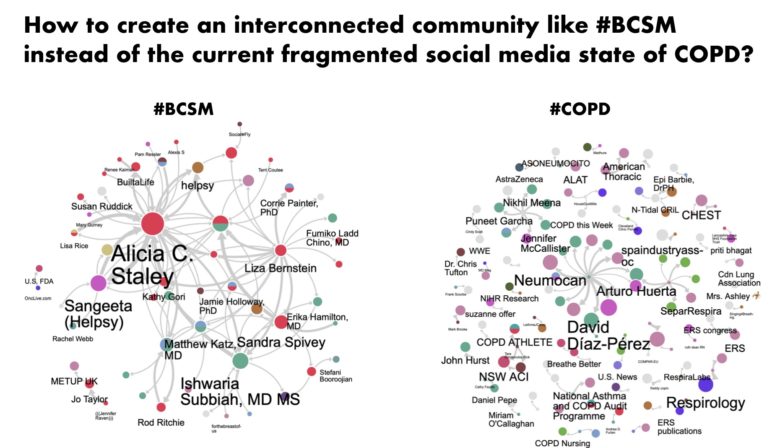
The Action: Beyond Design Thinking Prototypes, a Tangible Outcome
There are design thinking workshop participants who express frustration that they result in little more than a skit, or a duct-taped cardboard “thing” (by way of a flurry of sticky notes). The skits or mockups are prototypes, an essential step along the way to creating a new product or process. With this COPD design workshop, there actually was a tangible outcome, beyond the prototypes:
Buoyed by the information and the stories and experiences shared by so many of us—including MedX ePatient Scholars Liz Salmi and Adam Hayden, respectively co-founder and co-moderator of #BTSM—Grace Anne created and launched her twitter account during the conference’s closing keynote presentation.
As this network analysis graph shows, Grace Anne arrived on Twitter and rapidly became a central node in a slew of interactions that reached beyond the #MedX community.
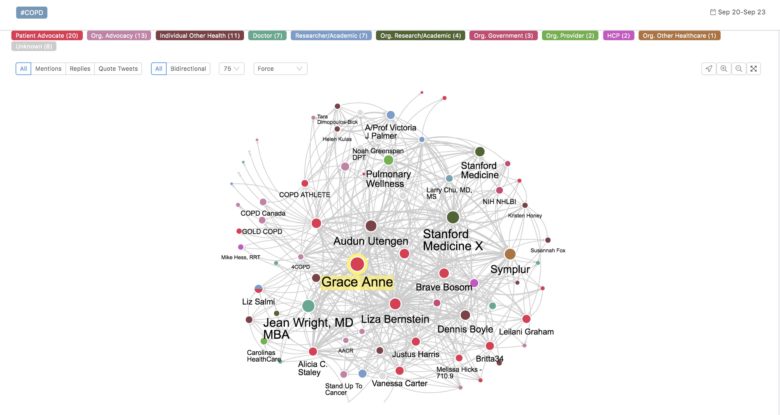
This was further confirmed by the rapid rise of her account’s Healthcare Social Graph Score.
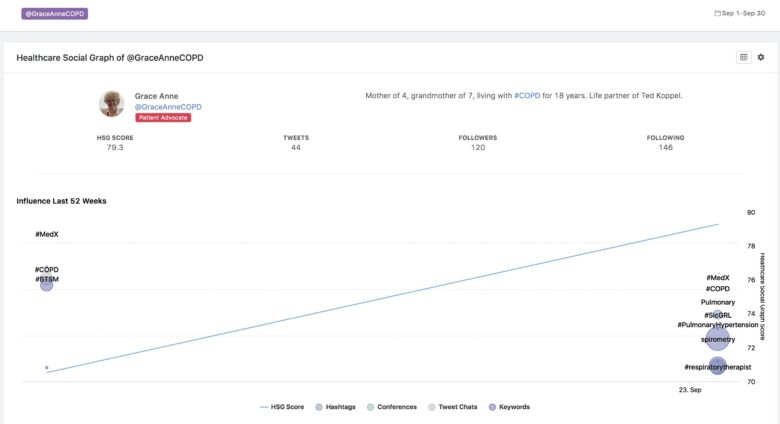
Next Steps: Awaiting Insights From Our COPD Social Media Dashboards
The Challenge is far from over and in the coming weeks we are eager to see how members will use the dashboards to inform their projects. For example, Monika Wittig is working with her students on a rural health project in Southern Colorado. In that remote, resource-restricted context, they plan to explore possibilities for empowerment and education around Twitter and COPD.
We look forward to sharing additional insights from the dashboards!
Stanford Medicine X COPD Design Challenge Photos by Audun Utengen

